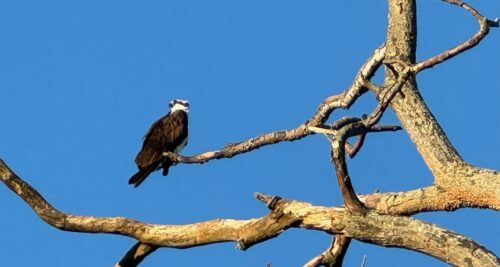
Columnist Mark Di Ionno of the Star Ledger has a piece today about the use of plywood dog cutouts to keep Canada geese off golf courses and playing fields.
He quotes the groundskeepers of a couple of golf courses who say the silhouette sentries are the most effective method they’ve yet found to scare off the fowl. Among the converts is Matt Dobbie, the course superintendent at Bamm Hollow Country Club in Lincroft.
“You could tell by the droppings that the geese stayed away,” he said. “Wherever there were dogs, we’d see almost none.”
And so the dogs are multiplying, kind of like their nemesis geese. At first, just a couple. Then a couple of dozen. Now hundreds.
Yes, but haven’t we heard this about a dozen times before that someone has hit on a can’t miss method to keep the geese at bay? Doesn’t it seem that the geese always get wise to our tricks?
Di Ionno calls the cutouts “the dogs of war.”
The war, now in its 15th or 20th year, has given us a share of bizarre ideas and wacky technology. Blasting air-horns. Screaming sprinklers. Workers kicking soccer balls. Tireless border collies chasing geese.
We’ve tried addling eggs. We’ve tried gas chamber trucks. We’ve tried feeding them to the homeless. Still the geese return. Millions come on migratory paths. Hundred of thousands have decided to stay, fouling the ponds, fields and golf courses.
Now comes an idea so basic, it’s brilliant.
Black plywood dogs. Decoy dogs. A new twist on an ancient farming method: the scarecrow.
The dogs began showing up all over New Jersey in late winter/early spring — the Toms River Country Club, the Parsippany Hilton Hotel’s lawn, the Edison High baseball diamond, the gazebo at Boonton Falls, the Denville Little League fields. Golf courses, public parks, corporate ponds and other places where migratory Canada geese fly, flock and … mate.





















